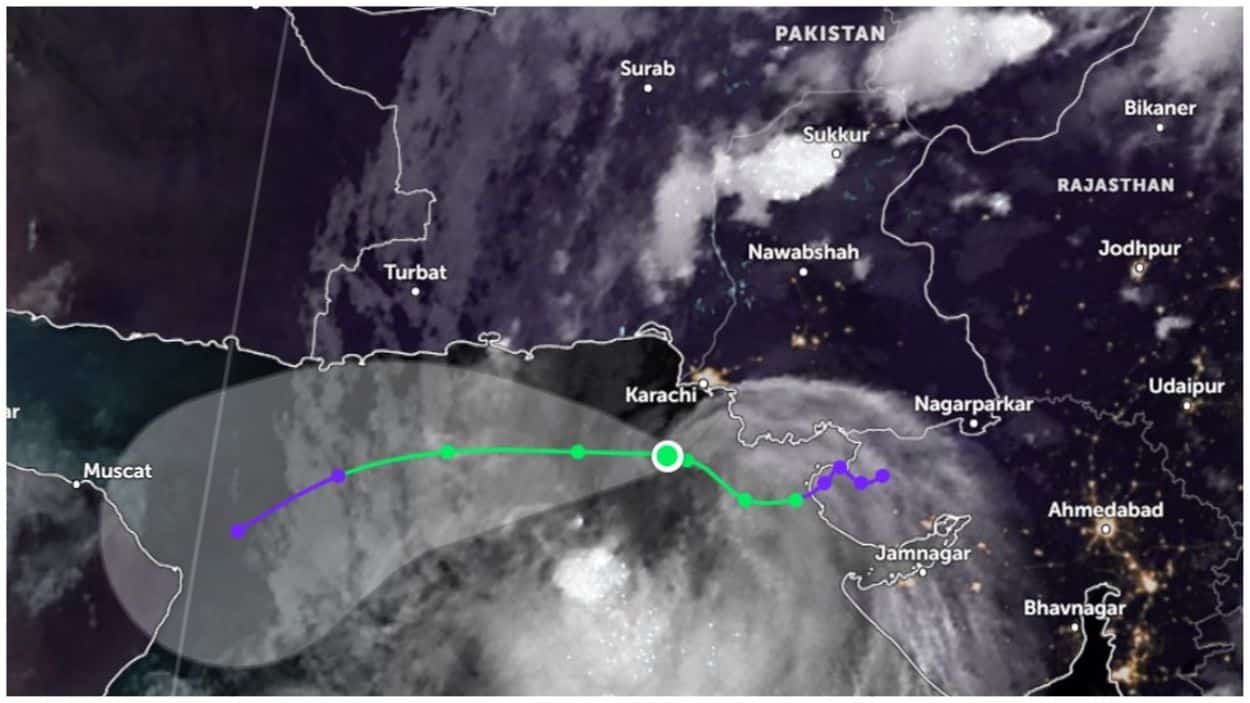The Pakistan Meteorological Department (PMD) announced that a weather disturbance over the Rann of Kutch in India has escalated into Cyclone Asna.
Currently positioned approximately 170km south/southeast of Karachi and 88km south of Kati Bandar, Cyclone Asna is situated at Latitude 23.5 N & Longitude 67.9 E. This development was highlighted in the department’s fourth alert concerning the storm.
Cyclone Asna is expected to continue moving west/northwestwards initially. The PMD has forecasted that under its influence, regions including the Karachi division, Tharparker, Badin, Thatta, Sujawal, Hyderabad, and several other districts will experience widespread rain and thunderstorms. These conditions, including scattered heavy to very heavy and isolated extremely heavy falls, are expected to persist through August 31.
The advisory also covers Hub, Lasbella, Awaran, Keach, and Gwadar districts, predicting similar weather patterns from August 30 to September 1, albeit with occasional gaps. Due to these heavy rains, waterlogging and inundation in low-lying areas of the Sindh-Makran coast are anticipated.
Maritime conditions are projected to be rough, with stormy winds reaching 60-70 km/hour and gusting up to 80 km/hour. Consequently, the Met Office has advised fishermen in Sindh and Balochistan to avoid sea ventures until August 31 and September 1, respectively.
The PMD’s cyclone warning centre in Karachi vigilantly monitors Cyclone Asna and will provide updates as necessary. Although Cyclone Asna will not directly impact the coastal areas of Sindh, including Karachi, its effects are likely to be felt widely.
Read: Cyclonic Storm Alert in Karachi: Heavy Rains Expected as Cyclone Approaches
Origin of the Name ‘Asna’: The name ‘Asna’, which means “The One To Be Acknowledged Or Praised” in Urdu, was selected by the Pakistan Meteorological Department. This name is part of a new list adopted in April 2020 by the WMO/ESCAP Panel for naming tropical cyclones in the North Indian Ocean region, which includes the Bay of Bengal and the Arabian Sea.
Cyclonic storms over the Arabian Sea in August are rare occurrences, with Cyclone Asna being the fourth development since 1944. Previous instances occurred in 1944, 1964, and 1976, with the storms originating over land and later intensifying upon reaching the Arabian Sea. In particular, the 1976 cyclone developed over Odisha, moved west-northwestwards and eventually weakened near the Oman coast.







